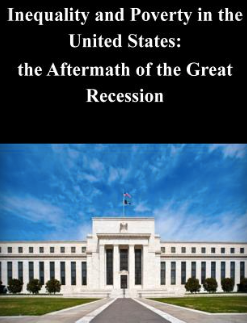MINDFULNESS BLOG/HEATH BLOG/KINDNESS BLOG/TEAMWORK BLOG
The Up Deeds blog
Our blog posts are created by those that share the same call to give back to others.
We give them the full credit they are due, and links so you can benefit from other information they share.

Understanding Poverty in the United States
By Up Deeds
Poverty remains a significant issue in the United States, affecting millions of individuals and families across the nation. According to the U.S. Census Bureau, approximately 11.4% of the population, or about 37 million people, were living in poverty in 2020. This staggering figure highlights the need for a deeper understanding of the causes, consequences, and broader impacts of poverty, as well as solutions to reduce or eliminate it.
Causes of Poverty
Poverty in the United States arises from a complex interplay of various factors:
1. Economic Inequality: A growing gap between the wealthy and the poor has been evident in recent decades. Wage stagnation for low-income workers, combined with rising costs of living, leaves many families struggling to make ends meet.
2. Lack of Education: Limited access to quality education often traps individuals in a cycle of poverty. Those without a high school diploma or any post-secondary education have significantly lower earning potential.
3. Unemployment and Underemployment: Economic downturns, like the one seen during the COVID-19 pandemic, exacerbate unemployment rates. Many who are employed may also be underemployed, working part-time jobs or positions that do not offer sufficient pay.
4. Health Issues: Chronic health problems can lead to increased medical expenses and decreased earning capacity. Limited access to healthcare further compounds these challenges, especially in low-income communities.
5. Structural Barriers: Systemic issues such as discrimination based on race and ethnicity can hinder opportunities for certain groups, contributing to ongoing economic disparities.
Effects of Poverty
The consequences of poverty extend beyond mere lack of income and can be profound and widespread:
1. Individual Impact: Living in poverty is associated with various negative outcomes, including poor physical and mental health, increased stress, and reduced life expectancy. Individuals often face social stigma and isolation, leading to a lack of community support.
2. Community Impact: Poverty can lead to deteriorating neighborhoods, increased crime rates, and a lack of community resources. Educational institutions in impoverished areas often struggle with funding and resources, perpetuating the cycle of poverty for generations.
3. National Impact: The economic burden of poverty is significant for the country as a whole. It places strain on social services, healthcare systems, and law enforcement. Furthermore, poverty can hinder economic growth, as a sizable portion of the population remains underutilized and unable to contribute fully to the economy.
How to Reduce or Eliminate Poverty
To effectively combat poverty in the United States, a multifaceted approach is essential. Here are some strategies:
1. Improving Access to Education: Investing in quality education from early childhood through higher education can help break the cycle of poverty. Programs that provide scholarships, vocational training, and adult education initiatives can empower individuals to secure better-paying jobs.
2. Increasing Minimum Wage and Job Opportunities: Raising the federal minimum wage and creating job programs that focus on low-income areas can help families achieve financial stability. Efforts should also target sectors with high demand for labor, providing training to connect workers with available jobs.
3. Healthcare Access: Expanding access to affordable healthcare can improve the well-being of low-income individuals and families. This can reduce medical expenses and improve overall productivity, allowing individuals to focus on work and education.
4. Housing Solutions: Affordable housing initiatives such as housing vouchers and community development programs can make a significant difference. Ensuring that families have stable housing can greatly reduce stress and improve their chances of success.
5. Supportive Services: Implementing programs that provide mental health support, financial literacy training, and childcare assistance can help families navigate the challenges they face effectively. These services can provide a safety net that enables individuals to pursue education and employment.
6. Addressing Systemic Inequalities: Legislative and policy changes aimed at reducing discrimination in the workplace and ensuring equitable opportunities for all are crucial. Promoting diversity and inclusion can help marginalized communities thrive economically.
Conclusion
Addressing poverty in the United States requires a comprehensive strategy that considers economic, educational, and social solutions. By tackling systemic inequality, improving access to quality education, increasing job opportunities, and creating robust support systems, we can foster stronger communities and create a more equitable society for all. The fight against poverty is not just about aiding individuals; it’s about strengthening the fabric of our nation. Recognizing and acting upon this issue can pave the way for a brighter future for everyone.
One of many books on the topic can be found here.

